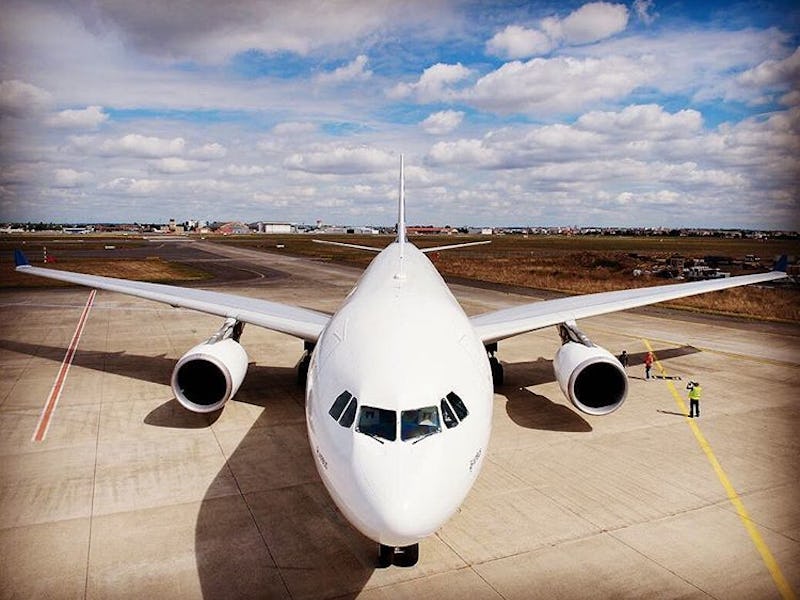Airbus Patents Docking Modules for Passengers
You’d be seated for your plane before it even arrives.

Airbus had a patent approved Tuesday for a planned method of boarding passengers by having them all seated and ready to fly before ever getting on a plane.
The patent document “Method For Boarding And Unloading Of Passengers Of An Aircraft With Reduced Immobilization Time Of The Aircraft, Aircraft And Air Terminal For Its Implementation” explains it all—that Airbus would like to improve efficiency by getting rid of the current methods of boarding and instead having its customers get strapped into “docking modules” that would be transferred between an airplane and airport.
That’s right—you’d never actually get on or off the plane by foot, but instead be received and delivered by planes at the airport.
A diagram of the recently patented Airbus "docking modules."
As demonstrated by the patent drawing above, passengers would board tube-like pods that could be deposited into or removed from a plane.
If this creates a feeling that this plan brings passengers closer to becoming, in effect, human luggage—here’s a quote from the patent:
“The [presented] invention relates to a method for transferring a payload, such as passengers and/or luggage, and/or freight, between an aerodrome or airport and a cabin of an aircraft, and in particular an aeroplane.”
It may not be all that enticing to fly an airline that sees you as a “payload” to be transferred through the skies, but at least the patent explains that this plan would be financially wise.
Financially wise, that is, for Airbus.
At one point, the patent goes on to explain that: “In the case of a cabin intended for passenger transport, the passengers can be seated in their respective seats over a relatively lengthy period, without the costly [immobilization] of the aircraft.”
This is referring to what is known as “turn-time,” the period before an airplane can make a new trip, for reasons that include allowing passengers to disembark, mechanical servicing, baggage and cargo unloading and loading—as well as receiving new commuters. According to an article by Boeing, reducing turn-times can mean “more paying passengers and, ultimately, more revenue.”
However, before panicking that this might be a look at the future of air travel, the patent artwork also shows that airports would have to be completely restructured to allow for all of this to ever become a possibility, so in the end—unless entire airports get rebuilt to accept what’s described in the patent, it seems docking module air travel is unlikely to become a reality in the near-future.